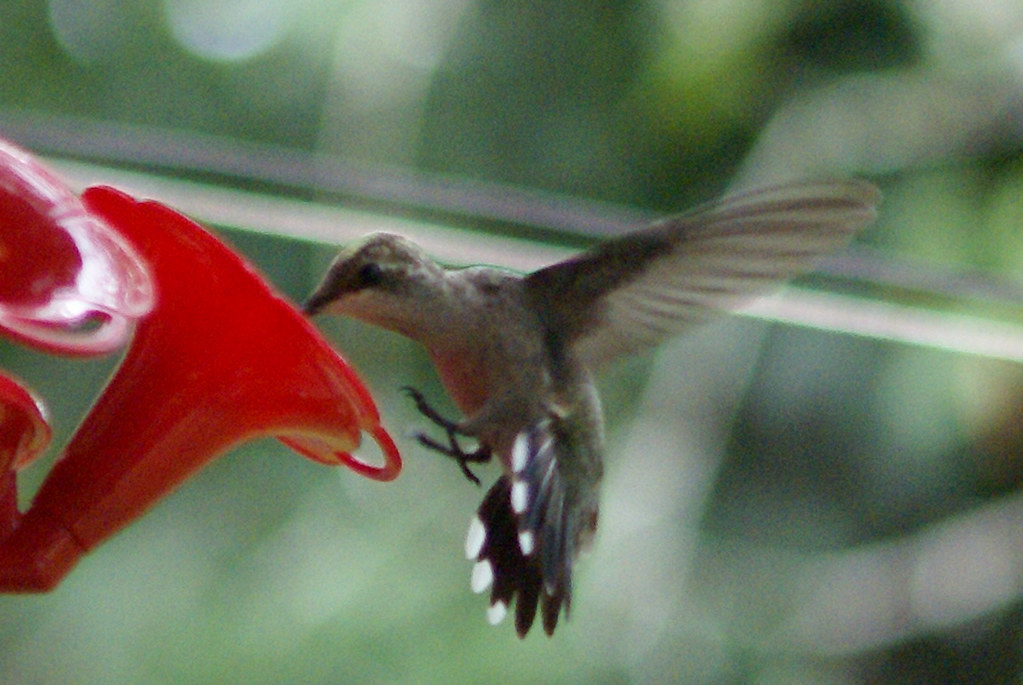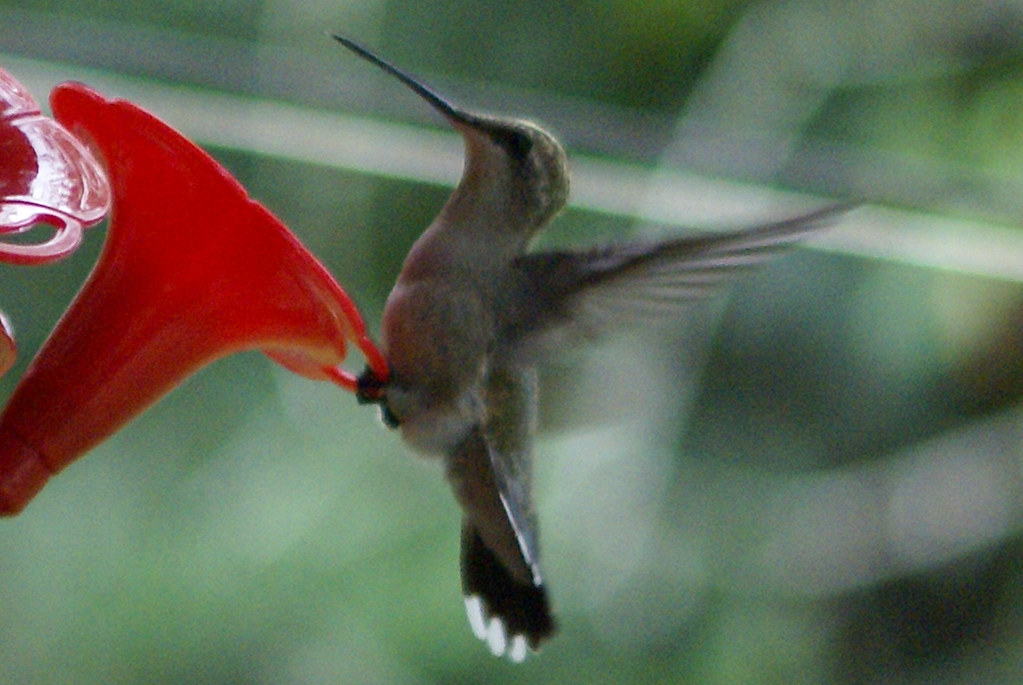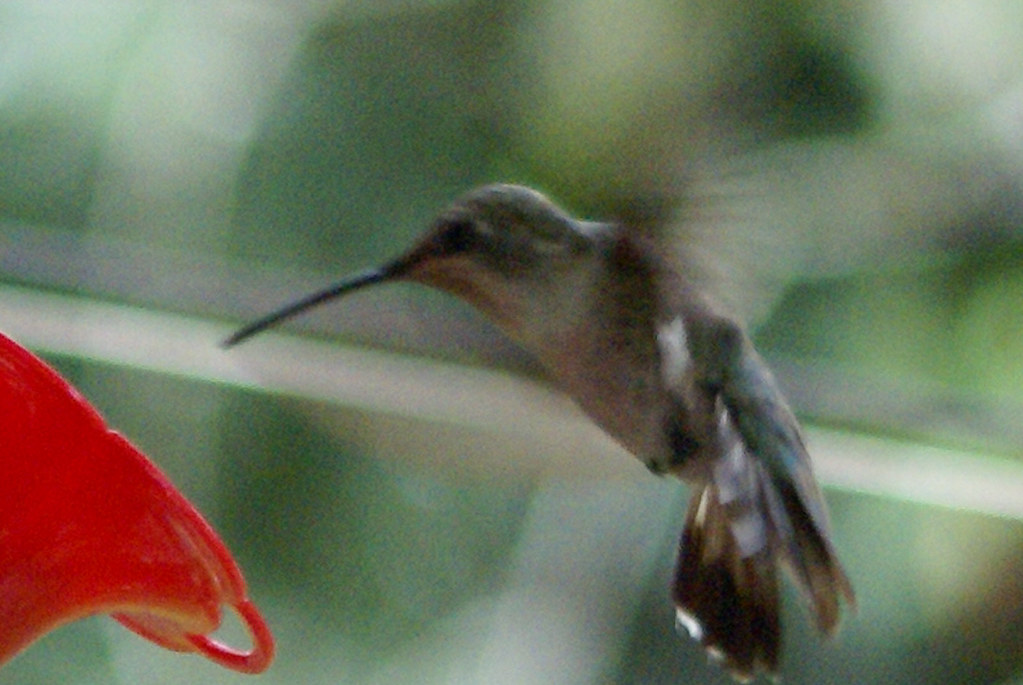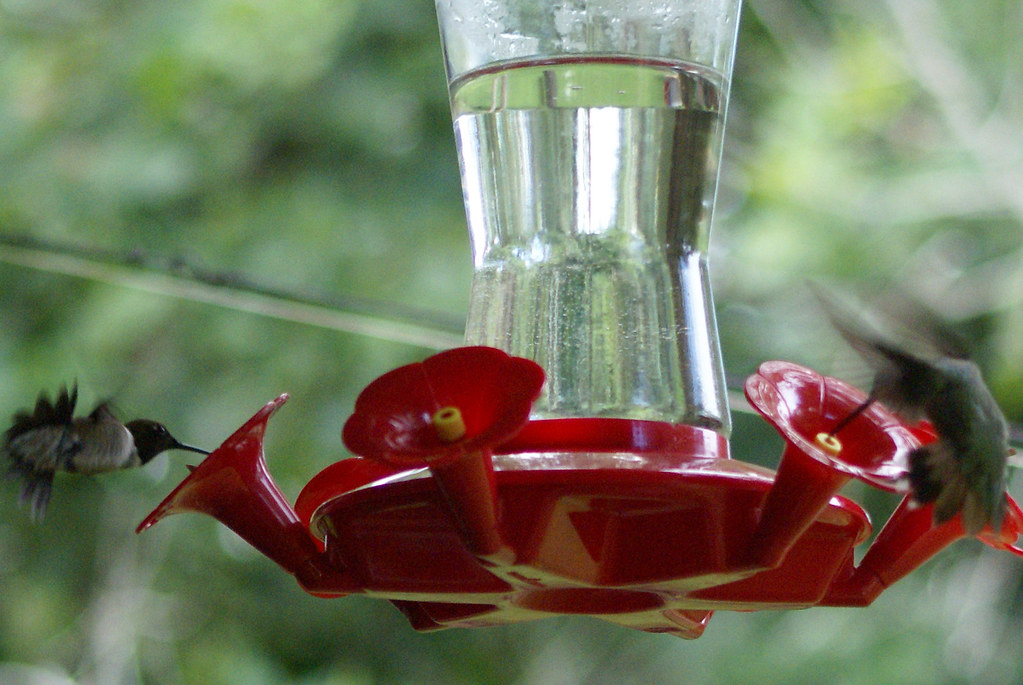There was quite a war between the birds and the bees as to who had the right to eat from the feeder.
Some birds just appeared to wait patiently for their turn at the feeder on a nearby wire stretched between the trees.






On another note, I'm going to attempt to go back to work tomorrow for the first time in just over 2 weeks. I don't know that I'll have the energy to work all day but I'm going to give it my best shot. I don't look forward to the piles on my desk and in my box that await me....


2 comments:
Ummmm, I don't think you're allowed to talk about the birds and the bees on your blog, Tammy! =0)
J/K - you got some great shots. Love the one with the bee in it. Pretty cool.
Ants, bees and wasps are insects that can cause problems with your hummingbird feeders.
Here are some tips that may help you solve the problem of bees and wasps.
1. Buy a feeder with bee guards. Many of the hummingbird feeders available on the market today come equipped with plastic guards. "Bee guards" are a screen-like device that fits over the feeder wholes that makes it difficult for the insects to reach the feeding solution. Unfortunately, many of these hummingbird feeders will also be prone to dripping which can lessen the effectiveness of the bee guards. To help solve this problem, you can use the following suggestions to help prevent your hummingbird feeder from leaking:
•Always fill the feeder completely full with cool nectar. The stopper should be inserted and the feeder quickly inverted to avoid any air entering the feeder. Tube feeders operate on a vacuum principle, and the feeder must be filled completely full in order for the vacuum to form!
•Only hang your feeder in shade or partial shade. The cooler the feeder, the less likely it is to drip.
•Make sure to keep the feeder very clean by regularly cleaning the vessel with hot water and a bottle brush. Soap should not be used during cleaning, because its residue may cause your feeder to drip. As an alternative, try periodically using a vinegar rinse to thoroughly clean your feeder and then rinse well with hot water.
•As a last resort, the stopper assembly can be placed in very hot water to soften the tube. You can bend it slightly to increase the angle. This will stop dripping, but might make it more difficult for nectar to come down the tube.
•If the dripping of this type of feeder is too much for you, then try a top-feeding hummingbird feeder instead.
There is no perfect solution as to how to prevent hummingbird feeders from leaking or dripping - feeders will drip occasionally. However, using the suggestions listed above will help minimize the amount of leaking or dripping that occurs, so that you can truly enjoy your feeder.
2. Try moving the feeder. Sometimes just moving the feeder, even just a few feet, will trick the insects into thinking that it's gone and they won't find it. Another suggestion is to take the feeder down for a day or two until the bees and wasp quit looking for it. Once the feeder is back up again, the hummingbirds will find it again, because the birds don’t give up looking for it as quickly as the insects do.
3. Give the insects their own feeder. Personally, I had never before heard of this prior to doing some research on the Internet, but I have since heard from many people that this is a very effective technique. This will require the use of separate hummingbird feeders, one for the bees and wasps and one for the hummingbirds. Bees and wasps are attracted to higher concentrations of sugar, so in their feeder use a nectar solution with a ratio of 1 part sugar to 3 parts water. In the hummingbird’s feeder, use a ratio of 1 part sugar to 5 parts water. This ratio is not as sweet as the normal nectar solution that is made with a ratio of 1 to 4, but the hummingbirds will still drink it and it will be far less attractive to the bees and wasps. It will take a few hours for the bees and wasps to find their own feeder and it should be placed away from the hummingbirds own feeder.
4. Buy a saucer-type Hummingbird feeder. This type of feeder is usually made of plastic. This type of feeder is far more drip proof because the feeding ports are located in the top, so they're not as likely to attract insects. Also, the nectar level will be lower and out of reach to the insects, but not out of reach to the hummingbirds because of their long tongues. This type feeder also does better in direct sunlight then other types of feeders.
Post a Comment